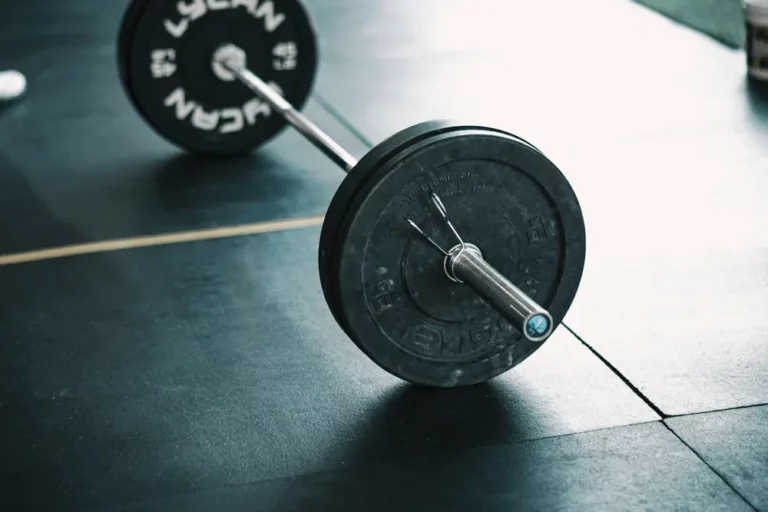Why My Treadmill Keeps Stopping: Fixes for Uninterrupted Workouts
Experiencing your treadmill suddenly stopping can be as frustrating as hitting a wall mid-run. It’s that moment when you’re in the groove, heart pumping, and then bam—everything comes to a halt. I’ve been there, and let me tell you, it’s not only annoying but can also throw off your entire workout routine.
The reasons behind this abrupt stop can be puzzling, ranging from simple fixes to more complex issues. Whether it’s a case of the machine playing tricks on you or a sign of an underlying problem, I’ve looked into it. Getting to the bottom of why your treadmill keeps stopping is crucial, not just for your fitness journey but also for ensuring your equipment’s longevity.
Common Treadmill Stopping Issues
When I’m in the middle of a good run, the last thing I want is for my treadmill to suddenly peter out. It’s happened more times than I’d like to admit, and I’ve started to notice a few symptoms and commonalities each time it occurs. The first thing is the abrupt stop; one minute, I’m jogging, and the next, it’s as if someone pulled the plug, even though it’s still connected. Sometimes, there’s this faint smell of burning, hinting at an overheating issue or perhaps an overloaded motor. Then, there’s the console. It might flicker, freeze, or even reset completely, losing all my workout data in the process. Initially, I’d check the basics, like ensuring the power cord is snugly plugged into the wall and that there’s no obvious obstruction on the belt. But when those quick fixes didn’t work, I knew it was time to dive deeper.
Identifying the Frequency and Patterns of Stops
I started keeping track of when and how often my treadmill would stop. Was it during the first few minutes of use, or did it only happen after I’d been running for a while? Did it seem to correlate with the speed I was going or whether I was on an incline? I also paid attention to what I was doing just before it stopped. Was I changing the speed or incline, or was it happening in a consistent setting? Keeping a log helped me discern patterns. I noted that it often stopped during longer sessions, possibly pointing to an overheating problem or when I was pushing the speed near the machine’s limit, which could suggest an overexertion issue on the motor’s part. Understanding these patterns was crucial for troubleshooting and figuring out the next steps toward a solution.
Electrical Issues and Power Supply Problems
Electrical issues and power supply problems can often sneak up on you, especially when it comes to electrical appliances as complex as treadmills. I’ve learned from my experiences and those of others that these issues are not just frustrating but can be the main culprits behind a treadmill that keeps stopping mid-workout.
Compatibility with GFCI Outlets and Surge Protectors
When I first got my treadmill, I didn’t give much thought to where I plugged it in. It turns out not all outlets are created equal. GFCI (Ground Fault Circuit Interrupter) outlets, for instance, are designed to cut off power when they detect an imbalance, which is great for preventing shocks in damp areas but can be problematic for power-intensive devices like treadmills. These outlets can sometimes misinterpret the normal power draw of a treadmill as a fault, leading to unexpected stops during a workout.
While it might seem like a good idea to plug your treadmill into a surge protector to shield it from power spikes, not all surge protectors can handle the high current required by treadmills. Some might cause more harm than good, limiting power flow or tripping breaker frequently, leading to those annoying stops.
Power Surges and Fluctuations Impact
Power surges and fluctuations are more common than most people realize. From my experience, these surges don’t just flicker your lights – they can also make your treadmill act up. A sudden surge can cause the treadmill’s console to reset or malfunction temporarily, while continuous fluctuations might weaken the machine’s electronic components over time.
I’ve learned that treadmills require a stable and adequate power supply to function correctly. When the voltage drops below or spikes above the norm, the treadmill’s internal components, like the motor controller, can be strained, causing it to stop abruptly. This is not only annoying but can potentially damage the treadmill in the long run, leading to costly repairs.
Safety Features and Operational Concerns
When my treadmill suddenly stops mid-run, it’s easy to jump directly to frustration. However, understanding the built-in safety features and operational norms can provide valuable insights into why these interruptions occur. Let’s dive into some key aspects that often play a role.
Role of Safety Key in Treadmill Functionality
The first thing I always check when my treadmill comes to an unexpected halt is the safety key. This small but crucial component is designed to stop the machine quickly in case of an emergency. Essentially, it’s a fail-safe mechanism. If the key becomes dislodged from its slot, even slightly, the treadmill will cease operation immediately. This feature is there to protect me from potential harm, ensuring that should I fall or drift back too far, the machine stops before I get injured. It’s important to make sure that the safety key is securely in place before beginning my workout.
Automatic Shutoff Timers and Overheating Precautions
Another aspect of treadmill safety and operation that has caught me off guard in the past is the presence of automatic shutoff features. Many modern treadmills are equipped with timers that limit the duration of continuous use to prevent overheating. When I’m lost in the rhythm of my run, I may not notice how long the machine has been operating. If the treadmill suddenly stops, it could simply be taking a precautionary measure to cool down.
Overheating isn’t just inconvenient; it can be downright dangerous. It can lead to internal damage within the treadmill and pose a risk to my safety. Recognizing the signs of an overheating motor, such as unexpected stops or a burning smell, is critical. These symptoms indicate it’s time to turn off the machine and let it cool. Regular maintenance, including cleaning and lubrication, can help prevent overheating and extend the life of my treadmill.
Mechanical Problems with the Treadmill
When my treadmill started acting up, stopping unexpectedly during a workout, I knew something was off. Digging deeper into the mechanical aspects of a treadmill, I discovered several common issues that could be causing the interruptions. Let me share what I found.
Wear and Tear of the Belt and Its Impact
Over time, the treadmill belt can suffer from wear and tear, especially if it’s used frequently. This wear can affect the treadmill’s efficiency and potentially cause it to stop unexpectedly. As I’ve learned, once the belt begins to wear down, it may not only cause the machine to halt but can also significantly strain the motor and electronic components. It’s crucial to periodically inspect the belt for signs of wear and consider a replacement if it’s severely worn out.
Adjusting and Aligning the Belt Rollers
Treadmill belts can sometimes move out of alignment, causing them to slip or the treadmill to stop during use. I’ve found that regularly checking the alignment of the belt and making minor adjustments can prevent these issues. Most treadmills come with an adjustment mechanism at the rear; a small turn of the adjustment bolt can realign the belt. Keeping the belt centered ensures that it runs smoothly and minimizes unexpected stops.
Checking for Belt Fraying and Tension Issues
Lastly, a frayed or tightly tensioned belt can also be the culprit behind a treadmill that keeps stopping. Fraying usually occurs on the edges of the belt and can cause the treadmill to stop abruptly if the frayed pieces get caught in the machine. Similarly, if the belt is too tight, it places additional strain on the motor, which could lead to overheating and, ultimately, the treadmill shutting down. It’s important to regularly inspect the belt for any fraying and to ensure it’s not too tight by following the manufacturer’s guidelines for tension adjustment.
Overheating of the Treadmill Motor
When my treadmill suddenly stops in the middle of a workout, it’s not just frustrating; it’s puzzling. After some digging, I’ve found that a common culprit behind these unexpected halts is the overheating of the treadmill’s motor. Let’s dive into what causes this overheating and how we can prevent it from interrupting our fitness routine.
Causes of Overheating and Preventative Measures
Firstly, it’s crucial to understand that the heart of every treadmill is its motor. This vital component can overheat for several reasons, affecting the machine’s performance and longevity. Here’s a breakdown of common causes and how to tackle them:
- Heavy Use Without Breaks: Continuously running the treadmill for extended periods without giving it a chance to cool down can lead to overheating. I’ve learned to schedule short breaks during my workouts to allow the motor to rest, especially during intense sessions.
- Inadequate Lubrication: The friction between the moving parts of a treadmill, especially the belt and the deck, can generate a significant amount of heat. Regular lubrication is key. I make it a habit to lubricate these parts as recommended by the manufacturer to ensure everything moves smoothly with minimal resistance.
- Overloading the Motor: Pushing the treadmill beyond its weight capacity or speed limits can strain the motor. I always check the user manual to stay within the specified limits, ensuring I’m not overworking the machine.
Implementing these preventative measures has not only helped in reducing instances of overheating but also extended my treadmill’s lifespan.
Ventilation and Dust Accumulation Concerns
Another aspect I’ve learned to pay attention to is the environment where the treadmill is placed. Proper ventilation is essential for maintaining an optimal operating temperature for the motor. I’ve positioned my treadmill in a well-ventilated area, ensuring there’s enough airflow around it.
Dust accumulation is another enemy of a treadmill motor, as it can clog the ventilation ports and insulate the motor, causing it to retain more heat than it should. I make it a routine to clean around and underneath the treadmill, focusing on keeping the motor area free of dust. Using a vacuum cleaner with a soft brush attachment works wonders for this.
Control Board and Sensor Issues
When my treadmill suddenly stops during a workout, it’s not just frustrating; it can also be a sign of underlying issues with the control board or sensors. These components are crucial for the smooth operation of the treadmill, acting as the brain and nervous system, respectively. Let’s delve into understanding these problems better.
Diagnosing Control Board Failures
The control board is essentially the heart of the treadmill, governing its speed, incline, and other functionalities. When there’s an issue, the treadmill might halt unexpectedly or refuse to start. I’ve learned that diagnosing control board failures typically begins with visual inspection. Signs of burnt components, odor, or visible damage on the circuitry are clear indicators of a problem. However, some failures might not be visible to the naked eye. In such cases, testing the board’s functionality with a multimeter helps. This step might be a bit technical for some, so don’t hesitate to seek professional help if you’re unsure. Remember, a faulty control board doesn’t always necessitate replacement; sometimes, repairing specific components can resolve the issue.
Sensor Malfunctions and Repair
Sensors, particularly the speed sensor, play a crucial role in informing the treadmill’s control board about the belt’s movement. If the sensor fails to send accurate data, the treadmill might stop abruptly to prevent damage or injury. Sensor issues often stem from misalignment, dirt accumulation, or damage. I found that a simple cleaning or realignment often fixes sensor malfunctions. For cleaning, I usually turn off and unplug the treadmill, locate the speed sensor near the front roller, and gently clean it with a soft cloth. If the sensor appears damaged or realignment doesn’t resolve the issue, replacement might be necessary. Fortunately, speed sensors are generally affordable and easy to replace.
Expert Tips for Treadmill Upkeep
When I first got my treadmill, I was ecstatic about the prospect of staying in shape regardless of the weather. But after a few frustrating sessions of it suddenly stopping mid-run, I knew something had to be done. Diving into the depths of maintenance and care, I’ve picked up a few expert tips that have not only solved my treadmill woes but also extended its lifespan. Here, I’ll share these insights to help you avoid the treadmill blues.
Using Surge Protectors and Regular Maintenance
One of the first things I learned is the importance of protecting my treadmill from electrical surges. Plugging it directly into the wall can be a gamble, especially during storms or when your home’s electrical supply fluctuates. Surge protectors have been a game-changer for me, ensuring my treadmill’s electrical components are shielded from unexpected spikes in voltage.
Regular maintenance, as mundane as it might sound, is crucial. Initially, I was skeptical. How much difference could a little lubrication make? Quite a lot, as it turns out. Lubricating the deck and belt reduces friction, making for a smoother run. This not only prevents the machine from overheating but also decreases the strain on the motor. Believe me, taking a few minutes every few months to apply silicon-based lubricant is a small price to pay for uninterrupted workouts.
Best Practices for Prolonging Treadmill Life
Although some people think treadmills are complicated, require a lot of time and would rather switch to a step machine, the truth is this is a great fitness addition, as long as you pay attention to a few things.Over time, I’ve also picked up on a couple of best practices that have proven invaluable in keeping my treadmill in top shape. First, keeping the belt aligned and tensioned correctly prevents uneven wear and reduces the chances of it coming to an abrupt stop. It requires a bit of effort and patience, but adjusting the belt as per the manufacturer’s instructions keeps things running smoothly.
Secondly, not overloading the treadmill is key. Every treadmill has a maximum weight capacity, and ignoring this can put undue stress on the motor. I make sure to keep an eye on my machine’s limitations, ensuring it’s not being pushed beyond what it’s designed to handle.
Incorporating these practices into my treadmill care routine has made a world of difference. Not only does my treadmill run better than ever, but I’m also confident it’ll serve me well for many more years.
Conclusion
I’ve shared my journey with you, hoping it’ll help you troubleshoot your treadmill woes. Remember that a little attention to detail and regular maintenance can go a long way. Don’t wait for your treadmill to start acting up. Stay proactive about its care. It’s not just about avoiding interruptions in your workout routine; it’s about ensuring your equipment serves you well for years to come. Happy running!
FAQ – Frequently Asked Questions
What is the best way to keep my treadmill’s belt aligned and tensioned correctly?
To keep the belt aligned, periodically check if it is centered and straight. If misaligned, refer to the manufacturer’s guide to adjust it properly. For correct tension, the belt should be tight enough not to slip but not too tight, as this can cause excessive wear. Adjust the tension bolts gradually and test the belt as you go.
Can overloading the treadmill damage it?
Yes, consistently exceeding the weight limit specified by the manufacturer can stress the motor, belt, and deck, leading to premature wear or failure. It’s crucial to adhere to the weight guidelines to maintain your treadmill’s performance and longevity.
What are the signs of a bad treadmill motor?
Signs of a failing treadmill motor include the treadmill abruptly stopping or changing speeds during use, emitting loud humming or buzzing noises, struggling to start or reach set speeds, and frequently tripping the circuit breaker during operation. These issues warrant further inspection, possibly indicating that the motor needs repair or replacement.







